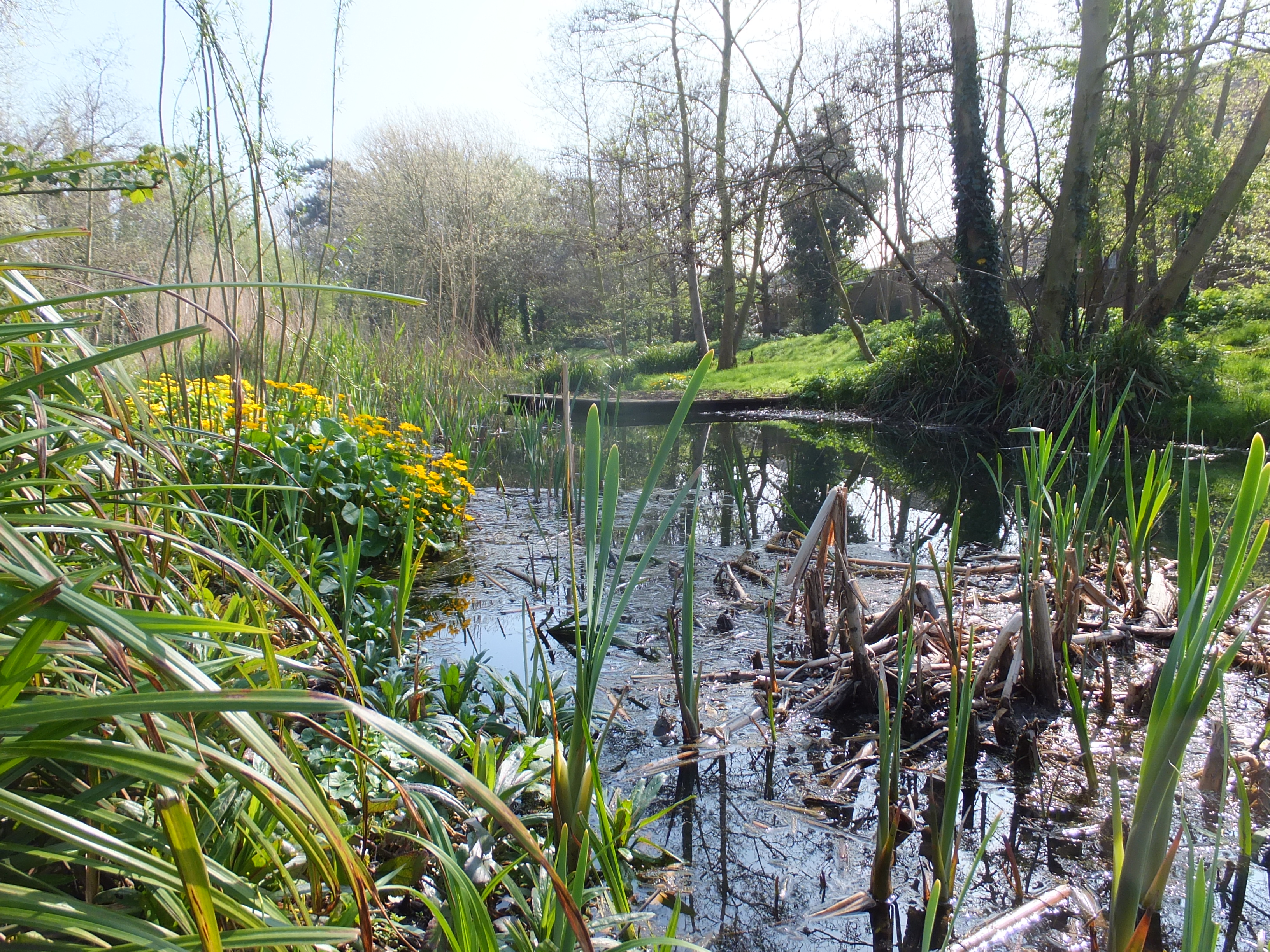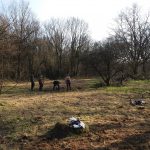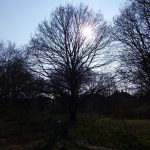Good lord, we’re well into March already. And after a balmy winter, Friday (4th) brought about the years first grass cut in my garden. After blowing out the cobwebs, cleaning the air filter and checking the oil and petrol, off we went on our quest to neaten the garden. However, unlike previous years, I noticed that I was far less gung-ho and far more slow-mow. Being more ecologically minded, I would peer over the mower, observe the forthcoming grass patch and grind to a halt, if I feared I would slice through the dreaded, detested and despised dandelion Taraxacum officinale. But why so cautious, in particular for a plant that when searching into Google ‘removing dandelion’, brings about 197,000 results and solutions?

Marbled White butterfly feeding off Common Knapweed. Joined by a hoverfly.
Now that I’m an esteemed ‘Biodiversity Assistant’ with Sutton Nature Conservation Volunteers and Sutton Council, I can ask whether I can tag along to events such as DEFRA’s ‘National Pollinator Strategy: Urban Knowledge Exchange Workshop’. This event attracted the nations leading Doctors and Professors, key policy makers, top ecologists, respected biodiversity officers and of course, an esteemed biodiversity assistant.
The day brought to my attention the value and necessity of our urban landscape to our national pollinators. Bees, hoverflies, butterflies, moths and beetles, provide critical ecosystem services, i.e. benefits to humans from the environment. These include food production, as through transporting pollen from one plant to another, the production of British crops is ensured. The National Audit Office, estimate that the value of honey bees alone (in the UK) is worth around £200 million, based on pollinating strawberries, apples, pears and oil seed rape, while the retail value of what they pollinate is considered to be around £1 billion. Yet, this doesn’t earn a mention in George’s illustrious budget review. A shame.

Buzzzzzzzzz. A bee enjoying the riches of a red clover Trifolium pratense late in the season (17/09/2015)
Conservationally speaking, as well as their economic importance, pollinators ensure the functionality of a healthy ecosystem. Simply put, by pollinating flowers, flora diversity is maintained and this enables all the essential interactions between flowers and animals (i.e. food, nesting and breeding resources) to take place. When considering the health and well-being properties of the natural landscape and how pollinators positively impact this, the conservation of our national pollinators is most certainly in our interest.
Despite their relevance, it is understood that pollinator diversity and abundance is declining, due to a number of environmental pressures. Use of herbicides/pesticides, intensive land use and habitat loss are all believed to be contributing factors to their decline. However, urban environments, such as Sutton, have the potential to be incredibly important habitats for our pollinator species.
Research suggests that across farmlands, nature reserves and urban areas there was no significant differences between pollinator species diversity and flower visitor abundance. Additionally, bee species diversity was higher in urban areas than farmland! Importantly, this suggests that urban landscapes are becoming an increasingly important habitat, so how can we improve them?

Cuddington Meadows. An SNCV site that is fantastic for pollinators
Typical features of an urban landscape include: road verges, recreation grounds, parks, school ground, offices, gardens and churchyards. These can all be managed sympathetically towards the needs of pollinators. Ultimately, providing structural heterogeneity and improving floral diversity is essential. By improving these components, the habitat will provide suitable conditions for pollinators at different stages of their life cycle and provide pollen and nectar resources throughout the Spring and Summer months. Where appropriate, methods that are encouraged include the sowing of seed mixes and plug plants, followed by a reduced mowing regime, which will allow the plants to set seed and provide resources throughout the desired months. See here to learn more about methods of improving the urban landscape.
At the SNCV, we aim to provide suitable conditions that will enable pollinators to thrive. During my time here, I’ve learnt a variety of methods that aim to improve plant abundance and diversity; green-haying and cattle grazing at Roundshaw Downs, plug planting across our sites, Sheep grazing at Cuddington Meadows, while scrapes have been created at Therapia Lane Rough in order to remove undesirable species and promote the growth of chalk grassland species. In essence, our grasslands are managed in a way that seeks to promote plant diversity and abundance, that will in turn, provide valuable resources for bees, moths, butterflies, hoverflies, beetles etc.
- The SNCV team out in March’s glorious sunshine. Here, you can see us scarifying in preparation for Sundays seed sowing and plug planting. Jumpers off!
- A glorious oak, basking in the Spring Sun
Clearly pollinators are fundamental to our existence and therefore, we should be doing everything in our power to help them. With this in mind, the SNCV have a couple of exciting projects coming up this month! Through community conservation days, we aim to improve pollinator conditions by plug planting at Roundshaw Woods and Carew Manor Wetland. At these sites, we will be planting suitable native plants, that have the most likely chance of surviving and thriving in these chosen habitats. For the SNCV, our main aim is to improve the conservation value of sites throughout Sutton, and by providing richer pollen and nectar resources throughout the seasons, we hope we can achieve this. In the years to come, through this work, we hope to develop areas that can be enjoyed by all things natural, including humans. So, if you have the time, do please come along to one of these community planting days.

Carew Manor Wetlands. On the 30th March, the SNCV will be aiming to improve the surrounding wet meadow through plug planting. Please do come and join us!
Oh, and in regards to those dandelions, a study in Canada found that this plant species had one of the highest diversities of bee visitors, when compared with other present plant species. In the early Spring months (such as now) the dandelion provides a valuable nectar source for the early and opportunistic pollinators! So leave them be, for now anyway.












March 18, 2016 at 3:11 pm
Glad you enjoyed the event, it was an interesting day!